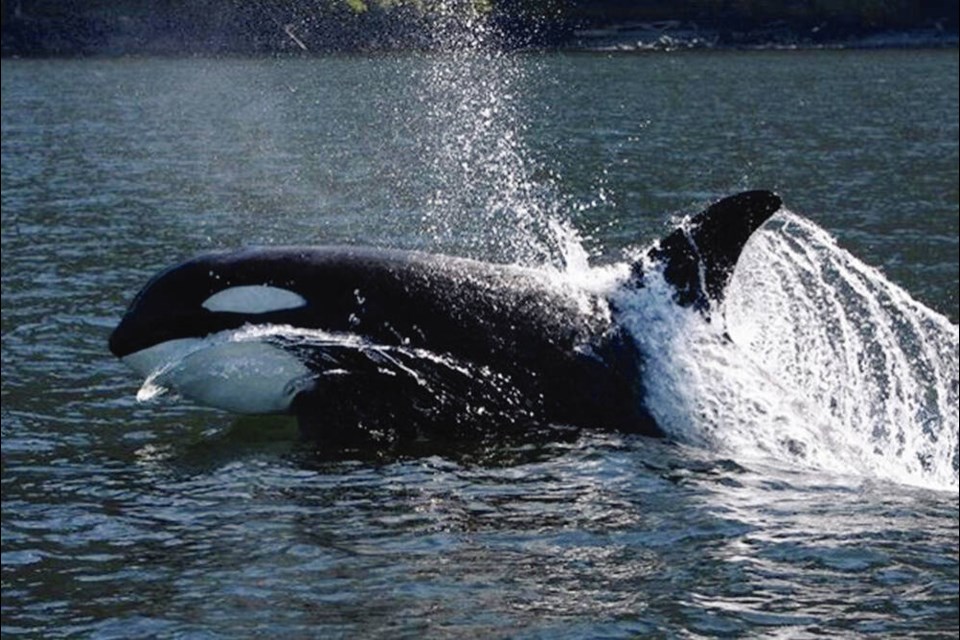Springer, the orca orphan returned to her pod in a dramatic rescue two decades ago, is being celebrated this week as an example of what humans can do when they co-operate.
Springer, also known as A73 and a member of the northern resident killer whales, was just two when she was discovered in early 2002, separated from her pod and alone after losing her mother. She was severely undernourished and starting to bond with humans.
She was seen in several areas hanging around marinas, rubbing up against vessels and allowing people — even dogs — to touch her nose.
An unprecedented rescue and rehabilitation followed, involving the U.S. and 91原创 governments, scientists, marine-mammal specialists, private boats and volunteers, many of whom are gathering starting Friday at the Whale Interpretive Centre in Telegraph Cove on the North Island.
Events include a presentation and team discussion at 11:30 a.m., kids’ activities and an eco-fair featuring marine-focused non-profit organizations from 11 to 4 pm.
In June 2002, Springer — more than 500 kilometres from her North Island home — was hoisted by sling into a holding pen off Manchester, Washington.
She was eating 100 kilograms of salmon a day and started to gain weight. She left Washington a month later aboard a jet catamaran headed for the waters off northern 91原创 Island.
Scientists, who had been unsure if Springer’s pod would even be in the area, released the young orca on July 14 as her pod swam by. Vocalizations indicated Springer and her pod recognized each other immediately, and Springer went right to them.
She has flourished since then, with two calves of her own: Spirit born in 2013 and Storm born in 2017. They are often seen on the north central B.C. coast and return to Johnstone Strait most summers.
“Springer’s story is an inspiration on many levels,” said Paul Spong of OrcaLab. “It proved that an orphan orca, alone and separated from her family, can be rehabilitated and returned to a normal productive life with her family and community; and it showed that disparate parties with diverse interests can come together and work together for the common goal of helping one little whale.”
Donna Sandstrom, director of the Whale Trail who wrote a children’s book called Orca Rescue! published last year on Springer’s rescue and reunion, said it’s the only project of its kind in history.
“First of all you had a rare combination of government agencies, non-profits, First Nations and volunteers who all stepped up to work together … it was like a relay race where everyone had a role,” she said in an interview Wednesday.
“Secondly, the exceptional risk and courage by governments and the 91原创 Aquarium to save this little whale was unprecedented. And third, the reaction of the whales in her pod was something nobody could predict. They showed up and they accepted her.”
Sandstrom said Springer’s continued success gives everyone hope, and “inspires us to approach issues facing orcas today with the same commitment, urgency and resolve.”
In her book, she notes that Springer’s great grandmother, A10, and a new calf were found shot and killed at Robson Bight in Johnstone Strait in 1983. Most people assume the matriarch was killed by a disgruntled fisherman, but there’s no conclusive evidence.
“Twenty years later, we went to an extraordinary effort to try to repair it,” said Sandstrom.
The orca captures for aquariums had stopped a few years before A10 was killed, between 1964 and 1976. “Springer was rescued approximately 40 years later — and is to me a measure of how much we learned about orcas in that time,” she said.
Lynne Barre, the lead for orca recovery at the U.S.’s National Oceanic and Atmospheric Administration Fisheries’ West Coast regional office in Seattle, said the Springer success story continues to be an inspiration for everyone working on conservation in the Salish Sea.
“The partnerships created during Springer’s rescue provide a strong foundation for international co-operation as well as co-ordination between government, state, tribal, and non-profit groups to benefit both northern and southern resident killer whales,” said Barre.
The northern resident orca population is faring much better than its southern counterparts. In 2019, data showed the 26 northern pods had about 300 orcas and the population was on an upward trajectory, increasing by about four per cent a year.
They are similar to the southern residents in that they travel in large family groups and are fish eaters, with a preference for Chinook salmon.
But they are not genetically related to the southern residents, whose population is endangered and down to just 74 individuals in three pods. A new baby in K-Pod — the first in the pod since 2011 — and another in J-Pod were discovered this summer, but not yet counted in the census.
Mary Borrowman, director of the Whale Interpretive Centre and co-organizer of the Telegraph Cove events, said reuniting with the rescuers every five years has been inspiring. She called the dramatic reunification of Springer with her pod “a miracle” that needs to be celebrated.
“Springer’s amazing success continues to inspire,” said Borrowman.



